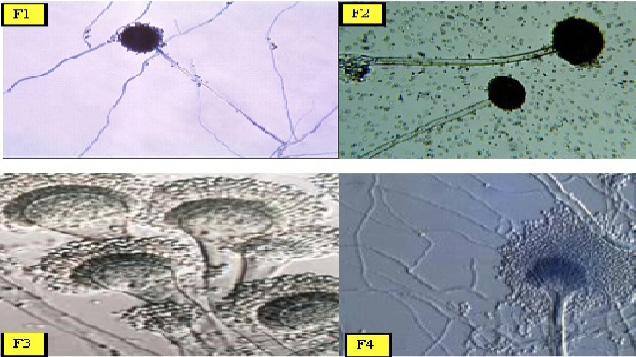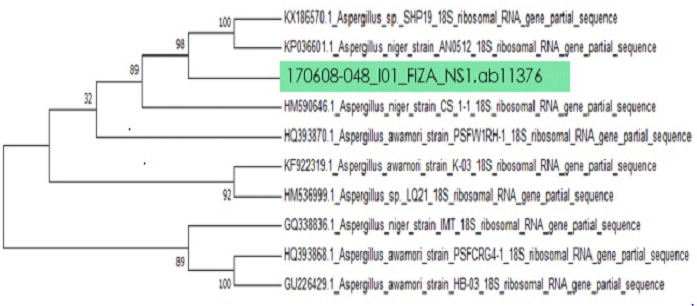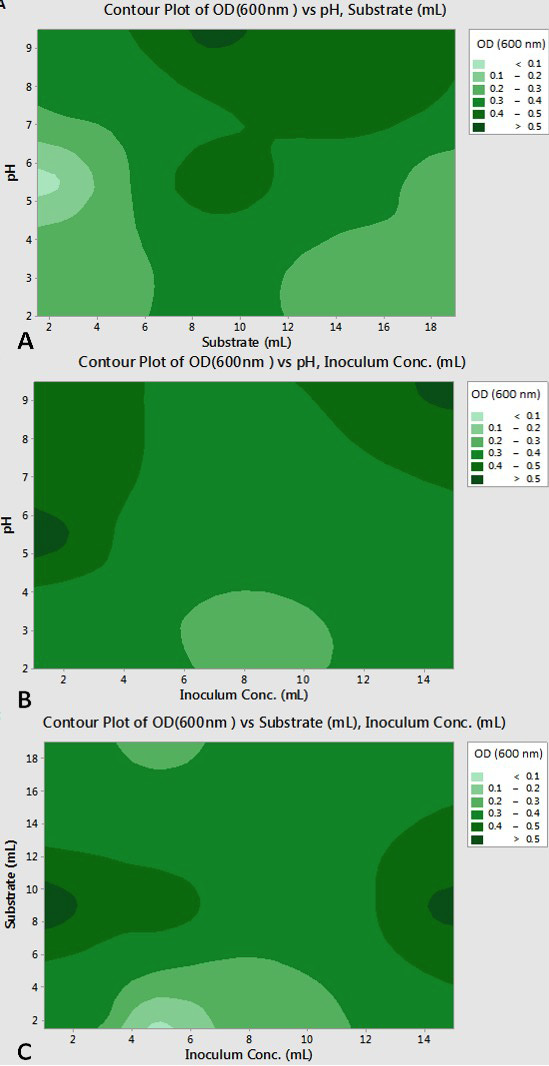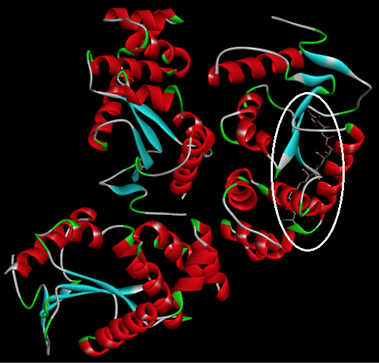Optimization of Fermentation and Production of Antimicrobial Agents as Secondary Metabolites from an Indigenous Aspergillus niger
Optimization of Fermentation and Production of Antimicrobial Agents as Secondary Metabolites from an Indigenous Aspergillus niger
Fizza Anwar1, Muddassar Zafar1*, Zahid Anwar1, Raja Tahir Mehmood2
Four different indigenous fungal species isolated and observed under light microscope (Accuscope 3012 LED Binocular Microscope, Accu-scope INC.), F1; Rhizopus stonolifer, F2: Aspergillus niger, F3; Aspergillus fumigatus and F4; Aspergillus terreus.
Phylogenetic tree of isolated strain of Aspergillus niger. The branching pattern was generated using neighbour joining method. The organism along with their gene bank accession number are shown at the end of each node. Newly identified sequence showed 98% homology with Aspergillus niger strains.
Interaction of pH vs substrate (A), pH vs inoculum concentration (B) and substrate vs inoculum concentration (C).
Interaction of Tautomycetin with Proteus mirabilis via Auto dock Vina. It was further observed that complex structure of P. mirablis DsbA (C30S) with a non-covalently bound peptide PWATCDS (4OD7) was also inhibited by tautomycetin leading to bacterial cell lysis.











